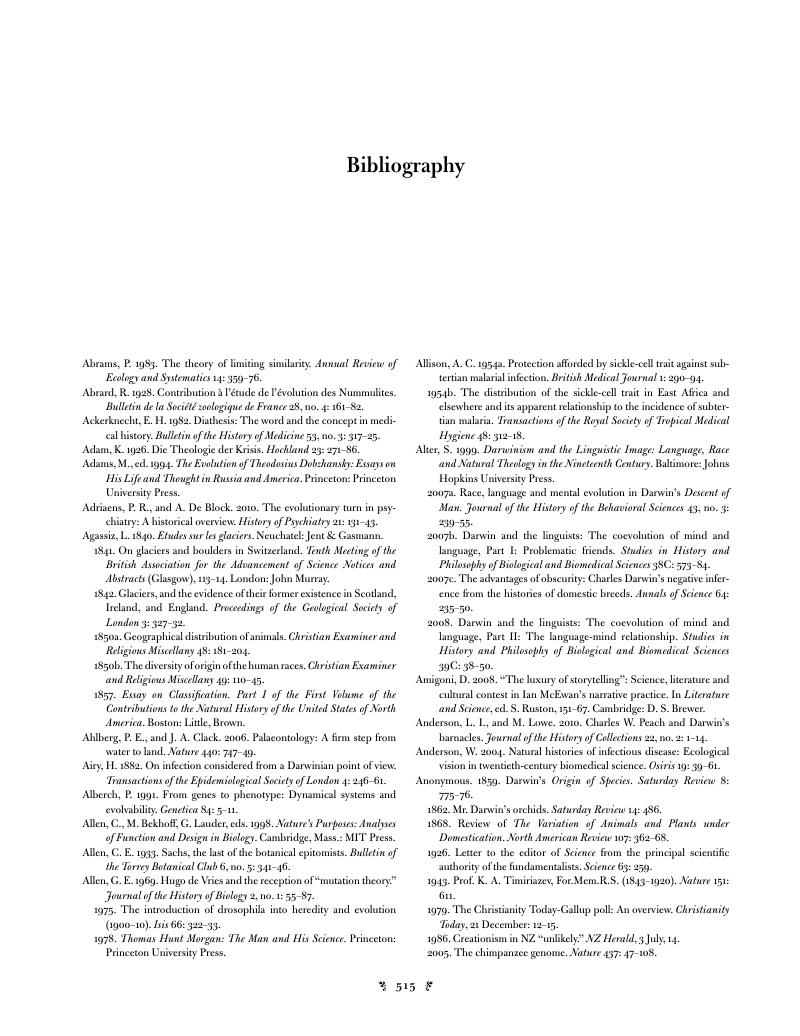Book contents
- Frontmatter
- Contents
- Contributors
- Preface
- Acknowledgments
- Introduction
- 1 Origins and the Greeks
- 2 Evolution before Darwin
- 3 Charles Darwin’s Geology
- 4 Looking Back with “Great Satisfaction” on Charles Darwin’s Vertebrate Paleontology
- 5 The Origins of the Origin
- 6 Darwin and Taxonomy
- 7 Darwin and the Barnacles
- 8 The Analogy between Artificial and Natural Selection
- 9 The Origin of Species
- 10 Sexual Selection
- 11 Darwin and Species
- 12 Darwin and Heredity
- 13 Darwin and Time
- 14 Darwin’s Evolutionary Botany
- 15 Mimicry and Camouflage
- 16 Chance and Design
- 17 Darwin and Teleology
- 18 The Evolution of the Origin (1859–1872)
- 19 Alfred Russel Wallace
- 20 Darwin and Humans
- 21 Darwin and Language
- 22 Darwin and Ethics
- 23 Social Darwinism
- 24 Darwin and the Levels of Selection
- 25 Darwin and Religion
- 26 Darwinism in Britain
- 27 Darwinism in the United States, 1859–1930
- 28 The German Reception of Darwin’s Theory, 1860–1945
- 29 Darwin and Darwinism in France before 1900
- 30 Encountering Darwin and Creating Darwinism in China
- 31 Darwinism in Latin America
- 32 Botany
- 33 Population Genetics
- 34 Synthesis Period in Evolutionary Studies
- 35 Ecological Genetics
- 36 Darwin and Darwinism in France after 1900
- 37 Botany and the Evolutionary Synthesis, 1920–1950
- 38 The Emergence of Life on Earth and the Darwinian Revolution
- 39 The Evolution of the Testing of Evolution
- 40 Mimicry and Camouflage
- 41 The Tree of Life
- 42 Sociobiology
- 43 Evolutionary Paleontology
- 44 Darwin and Geography
- 45 Darwin and the Finches
- 46 Developmental Evolution
- 47 Darwin’s Evolutionary Ecology
- 48 Darwin and the Environment
- 49 Molecular Biology
- 50 Challenging Darwinism
- 51 Human Evolution after Darwin
- 52 Language Evolution since Darwin
- 53 Cultural Evolution
- 54 Literature
- 55 Darwin and Gender
- 56 Evolutionary Epistemology
- 57 Ethics after Darwin
- 58 Darwin and Protestantism
- 59 Creationism
- 60 Darwin and Catholicism
- 61 Judaism, Jews, and Evolution
- 62 Religion
- 63 From Evolution and Medicine to Evolutionary Medicine
- Bibliography
- Index
- References
Bibliography
Published online by Cambridge University Press: 05 May 2013
- Frontmatter
- Contents
- Contributors
- Preface
- Acknowledgments
- Introduction
- 1 Origins and the Greeks
- 2 Evolution before Darwin
- 3 Charles Darwin’s Geology
- 4 Looking Back with “Great Satisfaction” on Charles Darwin’s Vertebrate Paleontology
- 5 The Origins of the Origin
- 6 Darwin and Taxonomy
- 7 Darwin and the Barnacles
- 8 The Analogy between Artificial and Natural Selection
- 9 The Origin of Species
- 10 Sexual Selection
- 11 Darwin and Species
- 12 Darwin and Heredity
- 13 Darwin and Time
- 14 Darwin’s Evolutionary Botany
- 15 Mimicry and Camouflage
- 16 Chance and Design
- 17 Darwin and Teleology
- 18 The Evolution of the Origin (1859–1872)
- 19 Alfred Russel Wallace
- 20 Darwin and Humans
- 21 Darwin and Language
- 22 Darwin and Ethics
- 23 Social Darwinism
- 24 Darwin and the Levels of Selection
- 25 Darwin and Religion
- 26 Darwinism in Britain
- 27 Darwinism in the United States, 1859–1930
- 28 The German Reception of Darwin’s Theory, 1860–1945
- 29 Darwin and Darwinism in France before 1900
- 30 Encountering Darwin and Creating Darwinism in China
- 31 Darwinism in Latin America
- 32 Botany
- 33 Population Genetics
- 34 Synthesis Period in Evolutionary Studies
- 35 Ecological Genetics
- 36 Darwin and Darwinism in France after 1900
- 37 Botany and the Evolutionary Synthesis, 1920–1950
- 38 The Emergence of Life on Earth and the Darwinian Revolution
- 39 The Evolution of the Testing of Evolution
- 40 Mimicry and Camouflage
- 41 The Tree of Life
- 42 Sociobiology
- 43 Evolutionary Paleontology
- 44 Darwin and Geography
- 45 Darwin and the Finches
- 46 Developmental Evolution
- 47 Darwin’s Evolutionary Ecology
- 48 Darwin and the Environment
- 49 Molecular Biology
- 50 Challenging Darwinism
- 51 Human Evolution after Darwin
- 52 Language Evolution since Darwin
- 53 Cultural Evolution
- 54 Literature
- 55 Darwin and Gender
- 56 Evolutionary Epistemology
- 57 Ethics after Darwin
- 58 Darwin and Protestantism
- 59 Creationism
- 60 Darwin and Catholicism
- 61 Judaism, Jews, and Evolution
- 62 Religion
- 63 From Evolution and Medicine to Evolutionary Medicine
- Bibliography
- Index
- References
Summary

- Type
- Chapter
- Information
- The Cambridge Encyclopedia of Darwin and Evolutionary Thought , pp. 515 - 550Publisher: Cambridge University PressPrint publication year: 2013



